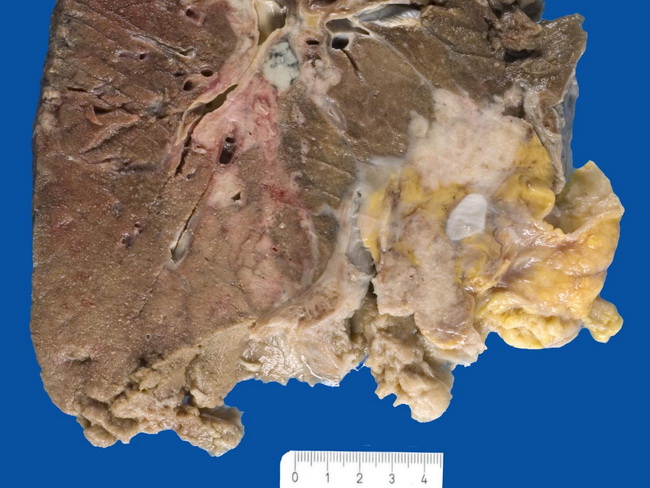Large Cell NE Carcinoma : Gross


Comments:
Introduction: Large cell neuroendocrine carcinoma (LCNEC) in a non-small cell lung cancer with neuroendocrine morphology and expresses neuroendocrine markers. It was previously classified as a variant of large cell carcinoma. Like small cell lung carcinoma (SCLC), it is strongly linked to smoking. Both SCLC and LCNEC share molecular pathogenesis and are similar in many ways. Clinical Features: LCNEC is a high-grade tumor like SCLC. The presentation is similar to other non-small cell lung cancers and consists of cough, hemoptysis, dyspnea, chest pain, pneumonia, hoarseness (due to vocal cord paralysis), and superior vena cava syndrome. In addition, there may be weight loss and fatigue. Unlike small cell carcinoma, paraneoplastic manifestations are less common. Distant metastases can occur to the same sites as those reported for small cell carcinoma (regional lymph nodes, ipsilateral and contralateral lung, liver, brain, bones, and adrenal glands, but occur less frequently. Gross: The most common location for LCNEC is peripheral (> 80% of cases) and upper lobes. In spite of frequent peripheral location, pleural effusion is uncommon. About 20% of cases are located more centrally near major bronchi. Such cases may be associated with atelectasis and pneumonia due to bronchial obstruction. LCNECs are large bulky circumscribed masses with yellow-tan cut surface. They may invade pleura, chest wall, or nearby structures.



